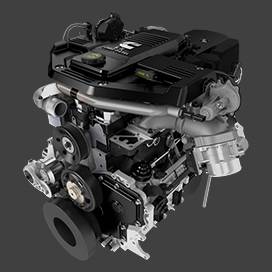Oct . 11, 2024 07:46 Back to list
Innovative Self-Regulating Brake Drum Technology for Improved Vehicle Performance and Safety
Self-Adjusting Brake Drums A Revolutionary Advancement in Vehicle Safety
The evolution of automotive technology has greatly enhanced vehicle safety and performance, with braking systems being one of the critical components. Among the innovations in this domain is the self-adjusting brake drum, a feature that promises not only improved braking efficiency but also reduced maintenance for vehicle owners. In this article, we will delve into the functionality, benefits, and importance of self-adjusting brake drums in modern vehicles.
Understanding Brake Drums
Brake drums are part of a drum brake system, which converts the vehicle's kinetic energy into thermal energy through friction. When the driver presses the brake pedal, brake shoes expand against the inner surface of the drum, thereby slowing down or stopping the vehicle. Traditional brake drums require manual adjustment over time, as the brake shoes wear down, to maintain optimal contact with the drum. This manual adjustment can be overlooked, leading to decreased braking performance and increased stopping distances.
What is Self-Adjusting Brake Drum Technology?
Self-adjusting brake drums have been engineered to automatically compensate for the wear of brake shoes. This means that as the shoes wear down, the adjustment mechanism engages to bring the brake shoes closer to the drum. The self-adjusting feature is essential for ensuring that the brakes remain effective without the need for regular manual checks or adjustments by mechanics.
How Do Self-Adjusting Brake Drums Work?
The mechanism behind self-adjusting brake drums typically involves a ratchet system and a lever connected to the brake shoes. As the brakes are applied, the lever moves with the brake shoes. When the shoes wear down, the lever rotates in a way that engages the ratchet mechanism, which then adjusts the position of the shoes to ensure they remain in contact with the brake drum. This process happens seamlessly during normal operation, making it largely invisible to the driver yet highly beneficial in practice.
self adjusting brake drums

Benefits of Self-Adjusting Brake Drums
1. Increased Safety The most significant advantage of self-adjusting brake drums is enhanced safety. With brakes that consistently maintain optimal contact with the drum, vehicles experience shorter stopping distances, reduced brake fade, and improved overall braking performance.
2. Reduced Maintenance Vehicle owners typically face the burden of regular brake maintenance checks to ensure safety and performance. Self-adjusting systems significantly decrease the frequency with which adjustments need to be made, leading to lower long-term maintenance costs and fewer visits to the mechanic.
3. Consistent Performance Traditional brake systems can lead to inconsistent braking performance, especially when shoe adjustment is neglected. The self-adjusting mechanism ensures that brake performance remains reliable over time, contributing to a more predictable driving experience.
4. Ease of Use For drivers, the convenience of not needing to manually adjust brakes is a considerable advantage. This feature is especially beneficial for those who may not be mechanically inclined or those who may overlook regular maintenance tasks.
5. Compatibility and Integration With advancements in automotive design, self-adjusting brake drums can be integrated into existing brake systems without excessive alterations. They are designed to work alongside both traditional and modern braking technologies, making them a versatile option for various vehicle types.
Conclusion
The introduction of self-adjusting brake drums represents a significant leap forward in automotive safety and maintenance convenience. As vehicle owners increasingly prioritize safety and reliability, innovations like these become essential. By automatically compensating for wear and maintaining optimal performance, self-adjusting brake drums not only enhance drivers' confidence but also contribute to a more efficient vehicle lifecycle. As the automotive industry continues to advance, the integration of such technologies will play a vital role in shaping safer and more reliable road experiences for everyone.
-
Scania Brake Drums: OEM Quality for Optimal Safety & Durability
NewsAug.16,2025
-
R.V.I: Advanced Remote Visual Inspection for Precision
NewsAug.15,2025
-
Discover HYUNDA: Innovative Vehicles, Equipment & Solutions
NewsAug.14,2025
-
R.V.I: Unlock Advanced Insights & Real-time Performance
NewsAug.13,2025
-
Kamaz Brake Drum: Durable & Reliable for Heavy Duty Trucks
NewsAug.12,2025
-
Heavy Duty Iveco Brake Drum - Premium Quality & Safety
NewsAug.11,2025
